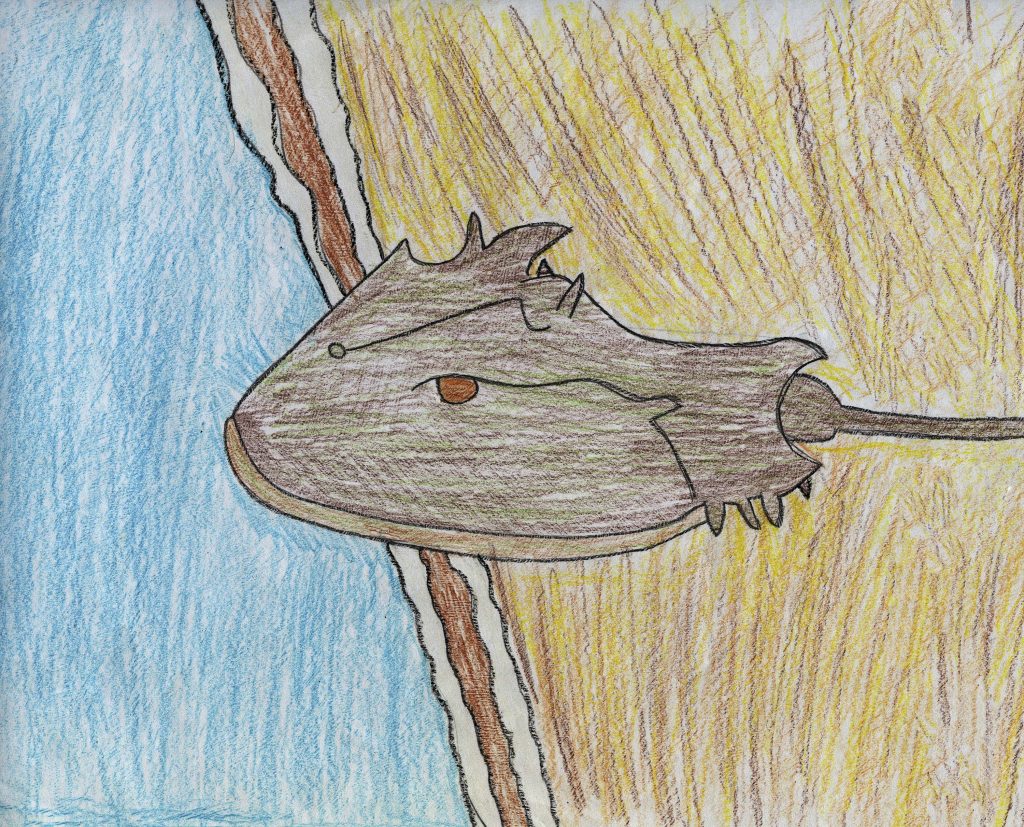Science and Art Come Together for the Win!
DTI Unit leads Christina Student to Success

When Fellow Nancy Ventresca wrote her unit “The Unsinkable Horseshoe Crab” she aimed to educate her Christina School District students about this aquatic organism that plays an essential role in the Delaware coastal ecosystem. Little did she know it would lead Briana Bradley, now a sixth grader at Kirk Middle School, to recognition in a juried arts competition and a love for these important and fascinating creatures.
Ms. Ventresca participated in Dr. Jack Bartley’s 2015 seminar entitled “Organisms – Adaptations for Survival in Aquatic Environments” and as a result wrote a unit to not only teach in her 5th grade classroom as an extension of a larger Ecosystems unit but also to publish on the Delaware Teacher’s Institute website. This published unit continues to be available for teachers across Delaware and beyond.
During the course of the unit, Briana helped write a grant that paid for their bus to visit the Delaware Bay just outside of Dover. She and her classmates were involved in the annual crab count which provides data scientists use to determine the current size of the horsheshoe crab population and to make decisions about harvesting levels for both the fishing industry and medical research. Horseshoe crab eggs are also a vital part of the food chain for migratory birds that travel through Delaware so scientists use this information to determine any potential impact on several of the threatened bird species.
Upon return from their trip the students participated in a juried arts competition called Young Voices: Horseshoe Crabs and the Arts hosted by the The Ecological Research & Development Group (ERDG). This organization founded in 1995, is a non-profit wildlife conservation organization whose primary focus is the conservation of the world’s four horseshoe crab species. Brianna Bradley’s colored pencil drawing was chosen as a winner!
Clearly Ms. Ventresca’s DTI unit has had a lasting impact on Brianna. “I have to say that this horseshoe crab unit was an amazing unit. The trip was a once in a lifetime experience. I felt as if I was a real scientist exploring the world of horseshoe crabs. I find it very interesting that horseshoe crabs have blue blood and are more related to dinosaurs. My most favorite part of the unit was probably doing the crab count. It was challenging but exciting to find real love for horseshoe crabs. I am so glad we did this unit!”
